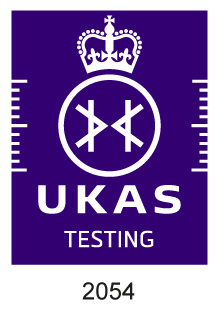Menu
close
**LATEST** New quantitative face fit services for RPE
Book in today

AEC’s qualified legionella risk assessors can undertake the required ‘regular’ reviews of your legionella risk assessments. This is a regulatory requirement and is designed to ensure that your risk assessments remain accurate and valid.
Regular reviews of legionella risk assessments are a regulatory requirement. They are undertaken to ensure that the risk assessment remains valid and that conditions relating to the water system have not changed and that the key remedial actions identified in the risk assessment have been appropriately actioned. The current guidance states that these reviews should be undertaken ‘regularly’ but previous guidance indicated a period of every two years which is still taken to be a reasonable frequency in most cases.
Legionella is a bacterium that can cause Legionnaires’ disease, as well as the similar but less serious conditions of Pontiac fever and Lochgoilhead fever. People contract Legionnaires’ disease by inhaling small droplets of water (aerosols), suspended in the air, containing the bacteria.
Legionella bacteria are widespread in natural water systems, such as rivers and ponds. However, the conditions are rarely right for people to catch the disease from these sources. Outbreaks of the illness occur from exposure to legionella growing in purpose-built systems where water is maintained at a temperature high enough to encourage growth such as cooling towers, evaporative condensers, hot and cold-water systems and spa pools used in all sorts of premises (work and domestic).
Legionella bacteria can cause Legionnaires’ disease, a potentially fatal type of pneumonia. It can also lead to other similar, but less serious conditions, of Pontiac fever and Lochgoilhead fever. Any water system has the potential to become a hazard to health, from a change in environmental conditions on site, an unnoticed system malfunction or a physical change in the system and use of the premises.
A legionella risk assessment involves a full inspection and assessment of the configuration, construction and condition of your water system. The purpose is to identify whether the equipment associated with the system such as pumps, heat exchangers, showers etc, and its constituent part are likely to create a risk from exposure to legionella.
A Water Management Policy, Plan and Procedure Document is designed to help your organisation set clear goals for water management. It is an auditable document that details clearly how you will manage the risks and track any remedial actions and on-going monitoring of the water systems. Your management plan should be reviewed annually and is an essential document to fulfil the statutory obligations.
Our clients benefit from AEC’s online portal. Available 24/7 all your records are contained in an easy-to-use management system. It’s a fast interactive system providing secure access to all reports and data to view at any time. View AEC’s Client Portal here.
The Duty Holder is the employer or person in control of the premises.
The Duty Holder is required to manage the risk from legionella bacteria by:
Duties under the Health and Safety at Work etc Act 1974 (HSWA) extend to risks from legionella bacteria, which may arise from work activities. More specifically, the Control of Substances Hazardous to Health Regulations 2002 (COSHH) provide a framework of actions designed to assess, prevent or control the risk from bacteria like Legionella and take suitable precautions. The Approved Code of Practice: Legionnaires’ disease: The control of Legionella bacteria in water systems (L8) contains practical guidance on how to manage and control the risks in your system.
The Legionella Control Association (LCA) is a membership organisation for providers of services and products concerned with the control of legionella bacteria in water systems. A valid registration with the LCA is evidence that the Member has an appropriate management system in place to comply with the LCA Member Commitments and that these are regularly audited by the LCA.

